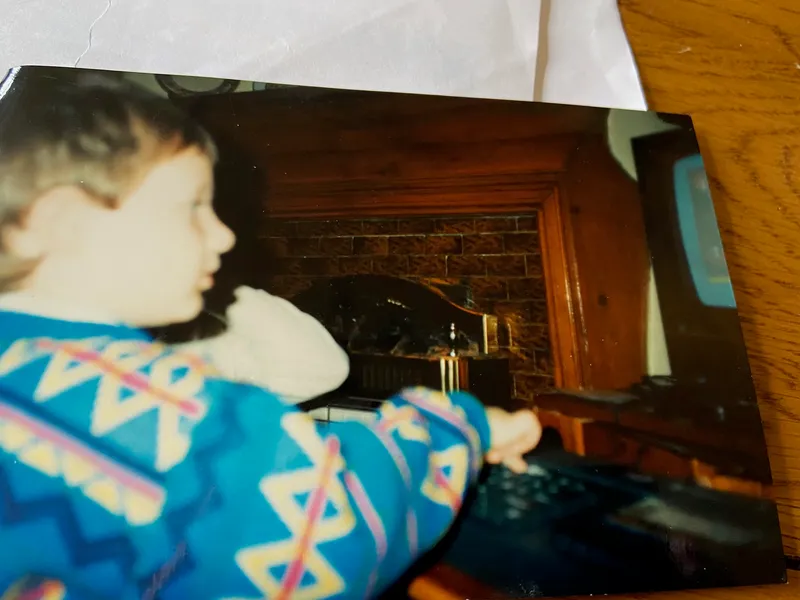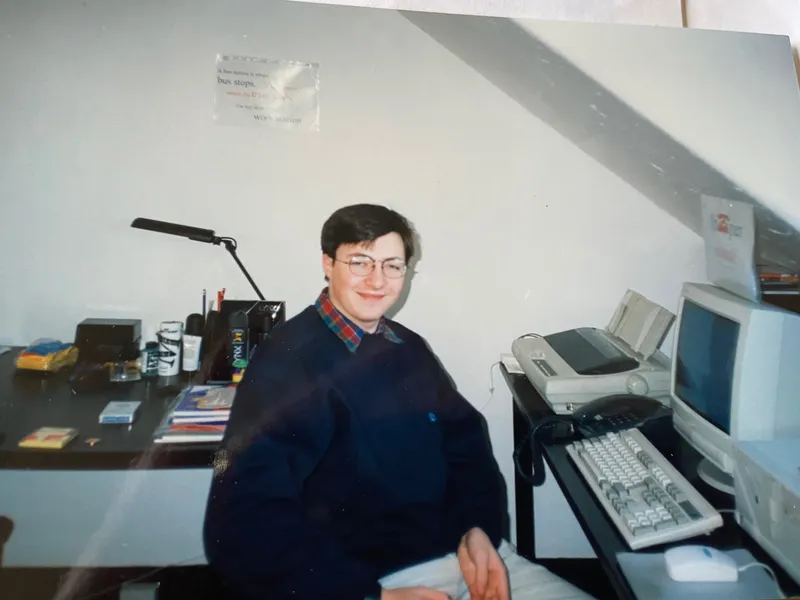[Techie Tuesday] He started to code at 8, went on to build an enterprise blockchain platform
In this week’s Techie Tuesday, we feature Richard Brown, CTO of London-based blockchain startup R3. His love for coding began when was 8 years old. He then spent 15 years in IBM building and testing different systems, and went on to build an enterprise blockchain platform.
Richard Brown’s shift as CTO of London-based blockchain startup R3 was serendipitous. He had spent over 15 years at IBM, and been a part of several product development and technology initiatives at the software giant.
He was working on several ideas and projects in blockchain and bitcoin on the side, but wasn’t looking to change jobs. But David E Rutter, the Founder of R3, had other plans – the first one was to hire Richard.
“He was quite persistent. To get him off my back, I said I would join if he could get five banks to sign on the dotted line to build a consortium of technologists and banks to launch a blockchain network,” Richard recollects.
Needless to say, R3 was able to get five banks and more, and Richard ended up joining.
As the CTO, Richard, along with the team, designed Corda, an advanced enterprise blockchain platform. The company now has a consortium of close to 100 banks, regulators, technology firms, professional service firms, and trade associations.
Building rudimentary IoT devices
Richard’s interest in bitcoin and blockchain was piqued in 2012, but his technological journey began in 1985 when his father got him a second-hand computer for his eighth birthday.
The oldest of three children, Richard grew up in Liverpool, United Kingdom. His father was a social worker and his mother was a teacher, and the boy shared his interest in math and technology with his father.

“My father had studied mathematics, and I guess that is where I got my interest in the subject. I was super excited when my parents got me the computer. It was a ZX spectrum, a simple machine, but I was hooked. You could load games on it through a cassette player. And you could also program on the computer, which came with BASIC programming language built in,” Richard recollects.
He says he had support from his uncle, an electrical engineer. In 1989, to encourage Richard, his uncle built a device that could plug into the ZX spectrum; this device could help relay and control things.
“I could detect closed circuits; I could turn burglar alarms and lights on and off. It was fun. It is called the IoT now (with Raspberry pie), but I did it with rudimentary systems. I was really interested in computers but there wasn’t a computer science mindset back then,” he says.

Richard Brown coding in his childhood
Richard joined Trinity College, Cambridge University, in 1996, and studied mathematics, physics, chemistry, and additional mathematics.
In 1999, the UK government – recognising the importance of computerisation -had pushed for a one year diploma in Computer Science. A three-year course was condensed into a one-year diploma, which Richard gained from.
The elite lab at IBM
Richard passed out in 2000, the time of the dotcom bust. While most people were wary of computer-related jobs and careers, he knew this was what he wanted to do.
“There was little I knew of the world of startups or IT. I applied to IBM and didn’t realise there would be two campuses and companies - the consultancy and the software engineering part. Luckily, I was recruited to be a part of IBM’s Hursley Labs in Winchester, UK,” he recalls.
“More than 2,000 software engineers were sitting in the English countryside and building things. We went from the university, a very academic and invigorating environment, to this lab. The day job was writing and testing software; it was a completely practical world,” he says.
Richard was part of the teams that went on to build products like Websphere, MQ Series, which is used even today by different world banks.

Richard during college days
On his first day, he reminisces that he “got to install the entire code and the very complicated integration product”.
“I was put into QA. I was initially put out, but in hindsight it was the best thing that happened to me. It gave me a broad view, of the industry, of products, their working, and how everything fit into the world of the user. Most developers rarely get a 360-degree perspective,” he says.
Working around the world
In the early 2000s, the world was going online and ecommerce was gaining ground.
During this time, IBM had built an integration project. If you were a company that had just built an ecommerce website, you needed to figure out how orders got to the manufacturing system and the logistics department, and how to integrate the different parts of your company.
This may seem obvious today, but it was a new concept in the early 2000s. IBM had the might and technical strength, but was losing to nimbler startups.
“We were at a competitive disadvantage. A team of engineers worked on the product and were deployed across the globe to ensure the product worked. In my early 20s, I saw the world and built projects in Australia, Eastern Europe, Siberia etc,” Richard says.
Understanding the financial markets
Richard soon realised he needed to build products and look at the entire journey from start to finish. By then, the team at the lab was getting disbanded and Richard, wondering about his next step, found that there was an opening at IBM's professional services team.
“This was a team for the same products. It wasn’t about winning deals; it was about successfully implementing solutions. At that time, IBM was buying a lot of other vendors and software firms. So, I got to develop skills in other products as well,” he says.
Majority of these projects were not happening in London, and Richard realised that it was the business people and architects who were moving around the globe.
Richard, who had started developing an interest in finance and economics, soon recognised that London housed all core banking systems.
“I spent much of my time learning about balance sheet; I found that fascinating,” he says.
Down the blockchain rabbit hole
Soon a technical job within IBM came up, and Richard decided to take it up. By 2013, interest around bitcoin had started growing.
“I had discovered a small column in The Economist; it piqued my interest. I started going down the rabbit hole and found it fascinating. I felt that this could be more relevant for fintechs. If something had to happen with banking and blockchain, multiple firms had to do things together.”
In 2015, he and a couple of colleagues worked on a joint project to see the different opportunities and ideas that could be built with a few small banks.
This was when R3 was keen to get the world's banks together in a consortium. In September 2015, Richard joined R3.
“We think the opportunity is to build new systems for markets, where all banks can be in sync about trade deals and loans, and maybe other industries as well. This is all about making markets run more efficiently. It's about optimising business processes that could transform operations of entire industries,” Richard says.
Building Corda
The R3 team concluded that these technologies and more could be built with the concepts underpinning bitcoin and other blockchains.
Public blockchains are based on pseudonymous identities. Identity is important in the financial sector as you need to know who you are transacting with. But you also don’t want the world to know who you are signing a contract or transacting with.
“How do we build a system that works similarly, but differently where it matters? That led to a lot of experimentation and prototyping,” Richard says.
It was then that the idea of Corda was born. Mike Hearn, a reputed Google engineer who had done a lot of work in the bitcoin space, joined as the lead engineer and the product was soon built.
A small startup in North America started using Corda to tokenise gold, a small number of insurance companies started using it for marine insurance, and the journey began.
Today, Richard runs a small but nimble team at R3.
What does he look for while hiring a software engineer? “If they can actually write software.”
“In IBM, hiring is a more centralised function and I wasn’t a part of many early rounds. But in R3, along with Mike, we realised that a lot of people can’t actually write software, but can maintain software written by other people, follow tutorials, and tweak things.”
“I'm not looking for a superstar. I'm not looking for like the world's best programmer. I just want to see evidence can this person write a program,” Richard says.
He advises all techies to “become an expert”.
“Master something and know it inside out. It is how I went from being one of 90/100 people to being one of a select few. I was an expert in the product; I knew how it worked. That gives confidence to people higher up. Use your time to master something become an expert. You can't be an expert as you become senior because you have to cover so many more topics. So work on it before that,” Richard says.
Edited by Teja Lele






![[Techie Tuesday] He started to code at 8, went on to build an enterprise blockchain platform](https://images.yourstory.com/cs/2/a9efa9c02dd911e9adc52d913c55075e/Techie-Tuesday-23-1606130314256.png?mode=crop&crop=faces&ar=2:1?width=3840&q=75)





![[Funding Alert] MakeMyTrip gets Rs 73.5 cr from its Mauritius entity amid coronavirus crisis](https://images.yourstory.com/cs/wordpress/2016/12/Deep-Kalra-founder-and-CEO-MakeMyTrip.jpg)


![[Startup Bharat] Y Combinator-backed BeWell Digital is enabling the digital transformation of radiologists](https://images.yourstory.com/cs/2/40d66ae0f37111eb854989d40ab39087/ImagesFrames31-1648033042143.png)